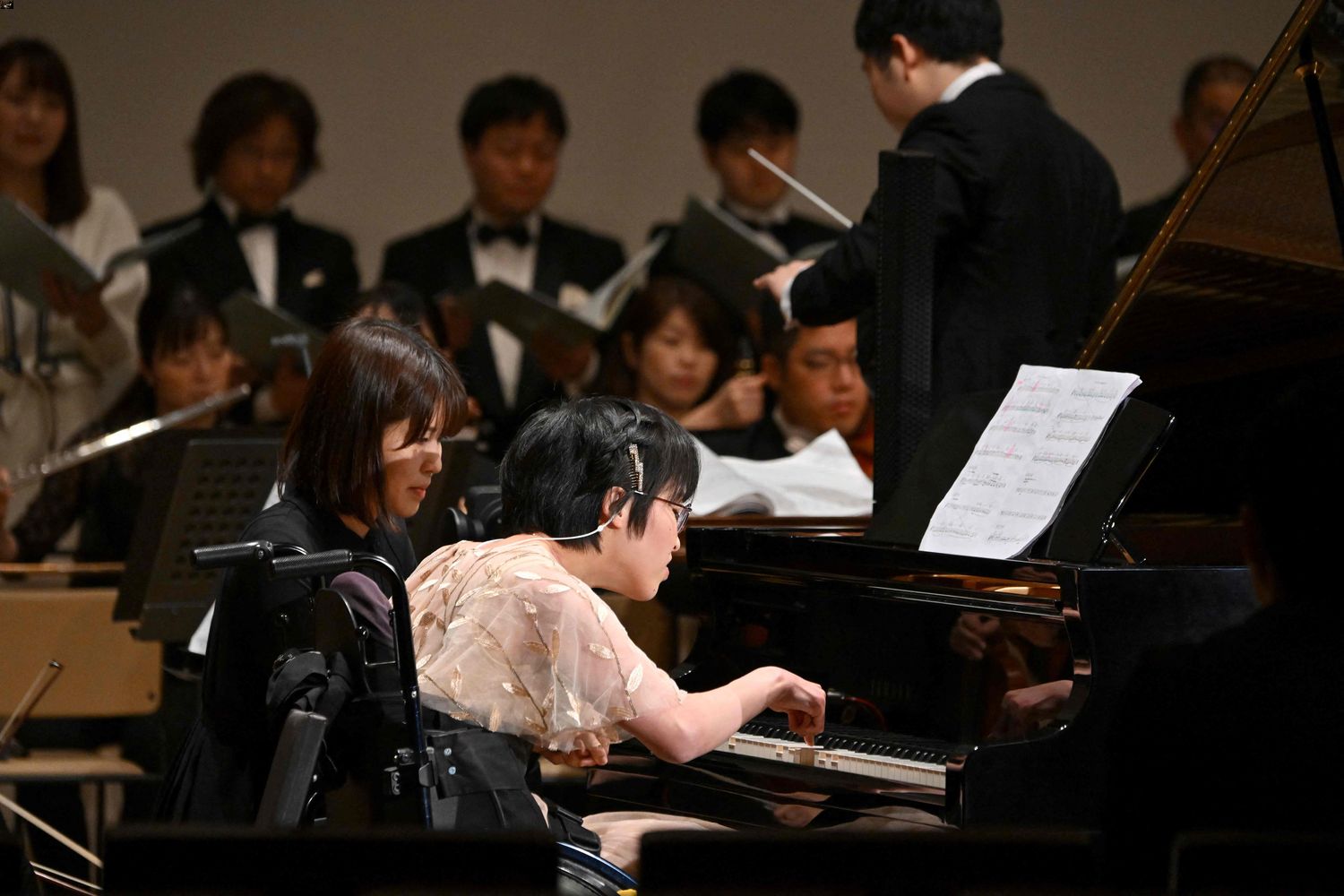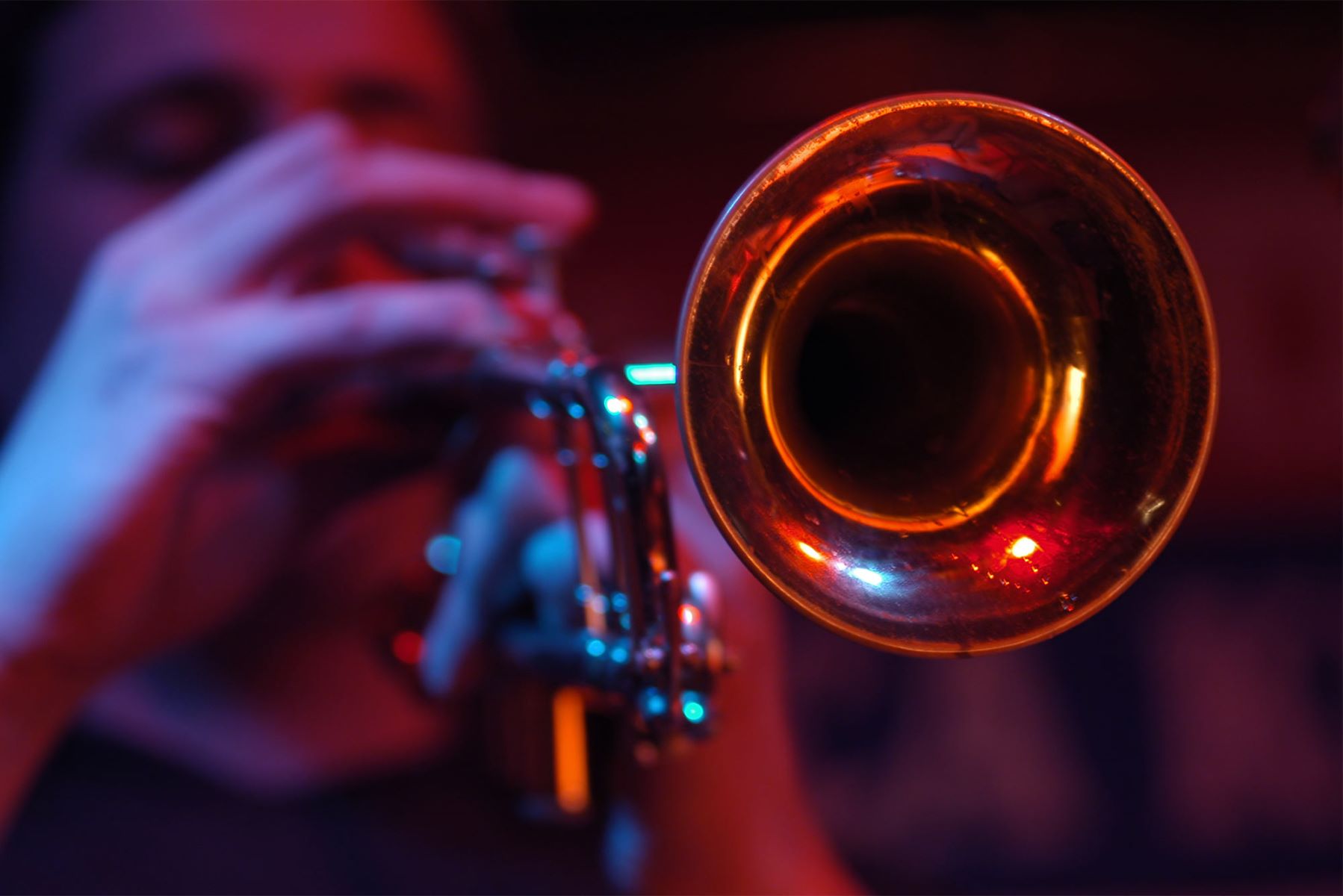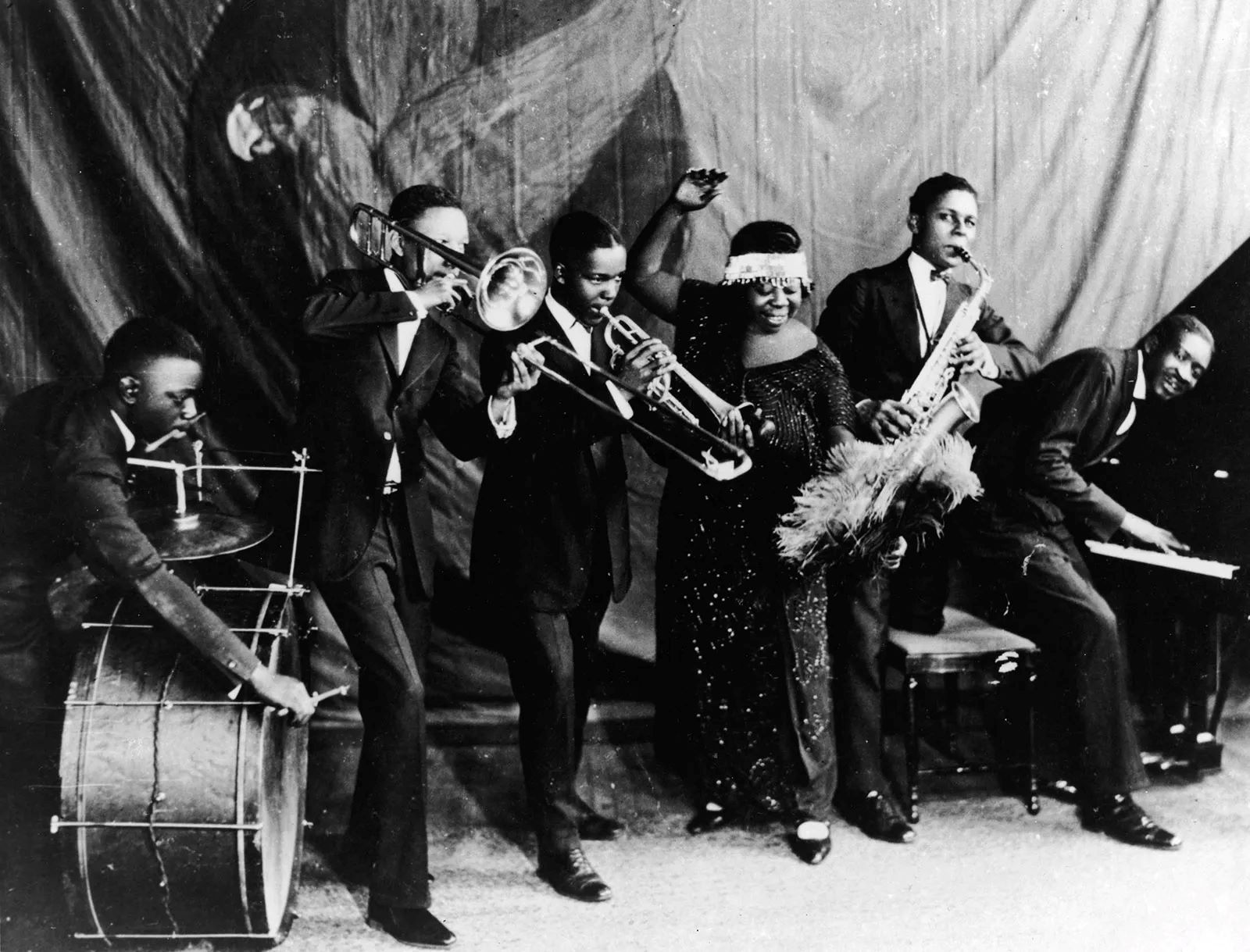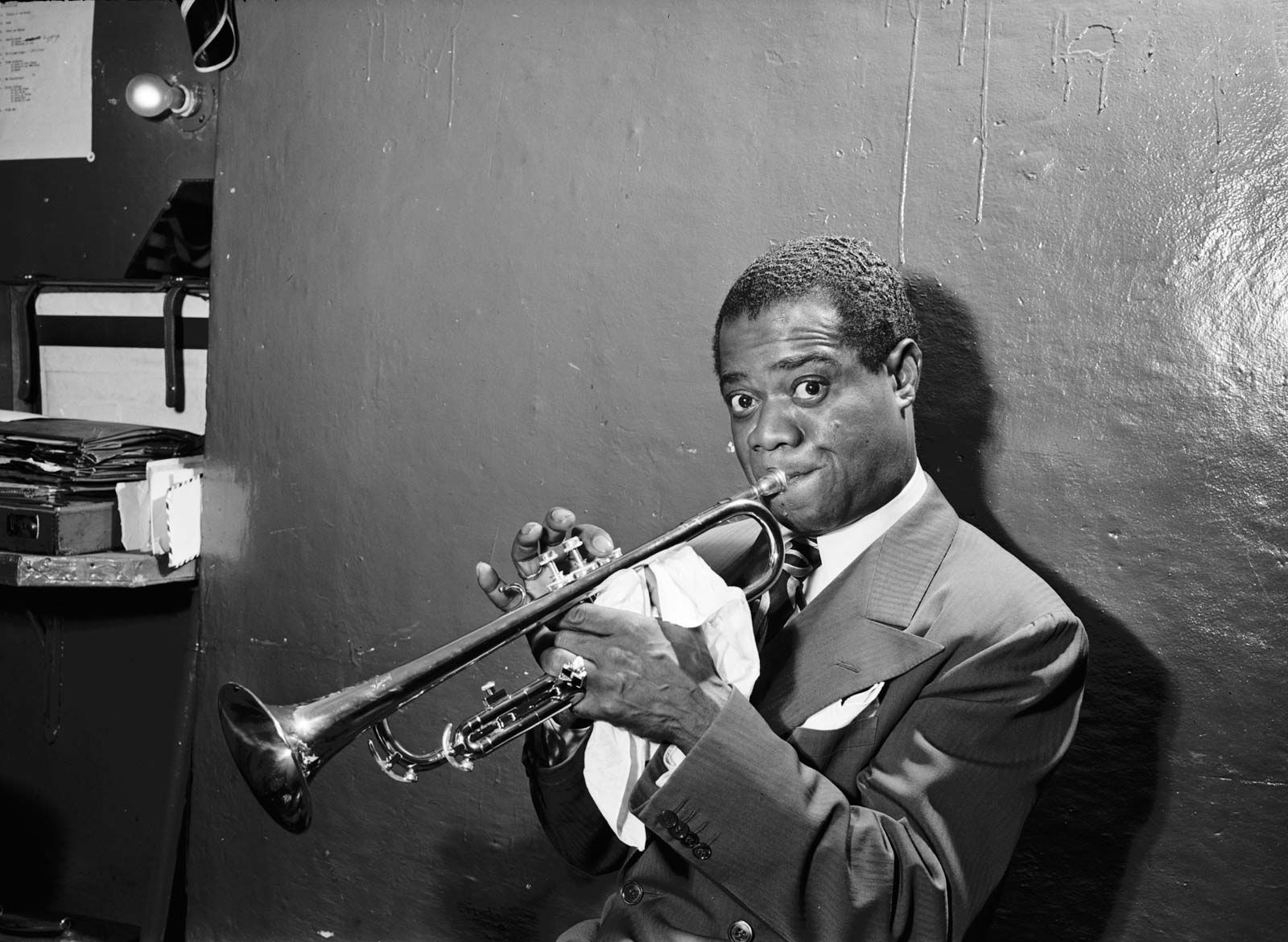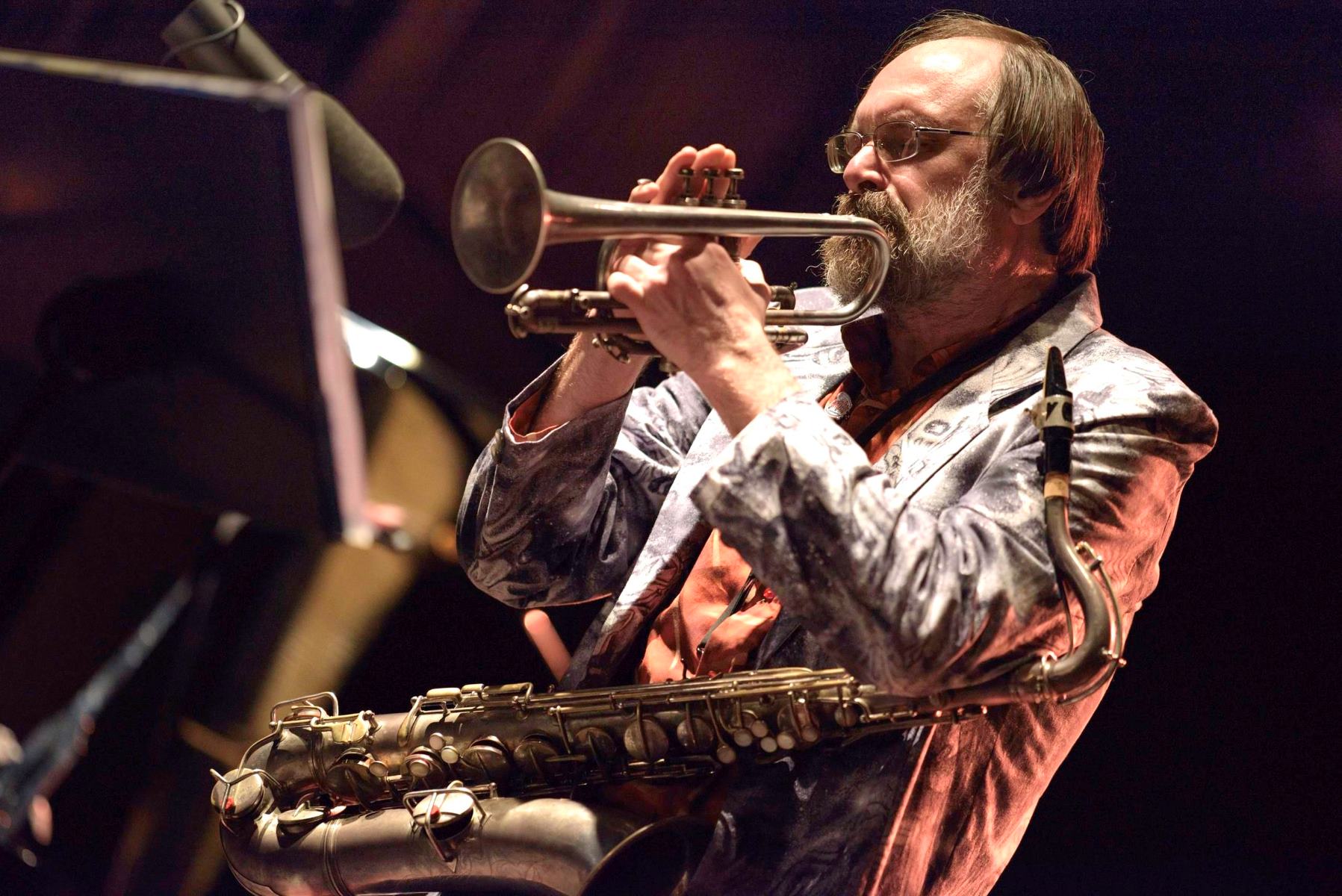

Jazz
When Did The Jazz Era Start
Modified: February 18, 2024
Discover the origins of the Jazz era and when it all began in this informative article. Explore the history and evolution of Jazz as a musical genre.
(Many of the links in this article redirect to a specific reviewed product. Your purchase of these products through affiliate links helps to generate commission for AudioLover.com, at no extra cost. Learn more)
Table of Contents
Introduction
The Jazz Era, also known as the Jazz Age, was a vibrant and transformative period in the history of music that began in the early 20th century. It is characterized by the rise of jazz as a popular and influential genre, which not only revolutionized the music industry but also had a profound impact on American culture and society at large.
Jazz emerged as a dynamic and improvisational style of music that combined elements of African and European musical traditions. It was born out of the African American experience in the United States, particularly in New Orleans, where diverse cultural influences and musical practices converged.
The Jazz Era marks a significant shift in music, with new rhythms, harmonies, and instrumentation that broke away from traditional conventions. It became a symbol of freedom, expression, and creativity, reflecting the social and cultural changes of the time. Jazz provided a platform for marginalized communities, giving them a voice and a means of artistic expression.
During the 1920s and 1930s, the popularity of jazz grew rapidly, spreading across the United States and gaining international recognition. It became the soundtrack of the Roaring Twenties, a period characterized by economic prosperity, cultural dynamism, and social liberation. Jazz clubs and speakeasies flourished, and legendary performers, such as Louis Armstrong, Duke Ellington, and Ella Fitzgerald, mesmerized audiences with their virtuosity and innovation.
The Jazz Era was not just a musical movement; it was a social and cultural phenomenon that challenged the status quo and promoted equality and inclusivity. It broke down racial barriers by bringing together musicians from different backgrounds and creating a sense of unity through music.
In this article, we will delve into the origins and development of the Jazz Era, exploring its key figures, styles, and its profound impact on society. Join us on this journey through the intriguing and revolutionary era of jazz, where music became a catalyst for change and a celebration of the human spirit.
Definition of the Jazz Era
The Jazz Era, also known as the Jazz Age or the Roaring Twenties, refers to a period in American history that encompasses the 1920s and early 1930s. This transformative era was characterized by the rise of jazz as a popular and influential genre of music.
Jazz, at its core, is a musical style characterized by its improvisational nature, syncopated rhythms, and expressive melodies. It draws influence from various musical traditions, including African rhythms, European harmonies, and the blues. However, the Jazz Era was more than just a genre of music; it represented a cultural movement that encapsulated the spirit and energy of the time.
During this era, jazz music became a symbol of rebellion against societal norms and a means of artistic expression for marginalized communities, particularly African Americans. It provided a platform for individualism, self-expression, and liberation.
The Jazz Era was marked by significant social and cultural changes. It emerged in the aftermath of World War I, during a time of economic prosperity and technological advancements. The 1920s witnessed the growth of urbanization, consumerism, and increasing social freedoms, particularly for women.
As cities thrived and new forms of entertainment emerged, jazz music found its way into the hearts and minds of countless individuals. It became popular in speakeasies, nightclubs, and dance halls, serving as the soundtrack for the vibrant nightlife of the era.
Furthermore, the Jazz Era was synonymous with the Prohibition era when the production, sale, and distribution of alcoholic beverages were banned. Speakeasies, which were illicit bars during Prohibition, became hotspots for jazz performances. These venues not only showcased the musical talent of jazz musicians but also provided a space for people to socialize and escape the constraints of society.
The Jazz Era was a dynamic and transformative period that pushed boundaries and challenged societal norms. It not only revolutionized the music industry but also had a profound impact on American culture, fashion, dance, and literature. It represented a break from tradition and a celebration of creativity, individuality, and the free spirit.
In the next sections, we will explore the origins and predecessors of jazz, the birth of jazz as a distinct genre, the early jazz styles that emerged during the era, and the key figures who shaped the Jazz Era into what it is remembered as today. Join us as we delve into the rich history and cultural impact of the Jazz Era.
Predecessors of Jazz
Before the Jazz Era took the world by storm, there were several musical styles and cultural influences that laid the foundation for jazz to emerge and flourish. These predecessors played a crucial role in shaping the unique sound and spirit of jazz music.
One of the most significant predecessors of jazz was the musical tradition of African Americans, particularly those who were descendants of enslaved people. They brought with them a rich musical heritage from their African roots, which included complex rhythmic patterns, call-and-response singing, and improvisation. These musical elements would later become fundamental aspects of jazz.
Another important precursor was the blues, a genre that originated in the Mississippi Delta region. Blues music expressed the hardships and emotions of African Americans, often accompanied by soulful vocals and the use of instruments such as the guitar and harmonica. The blues laid the foundation for jazz’s emotional depth and the use of blue notes, which are flattened or bent notes that create a distinct sound.
Ragtime, a popular musical style in the late 19th and early 20th centuries, also contributed to the development of jazz. Ragtime was characterized by its syncopated rhythms and lively piano melodies. It incorporated elements of European classical music with African rhythms, creating a unique fusion that laid the groundwork for the improvisation and rhythmic complexity of jazz.
Brass band music, prevalent in New Orleans during the late 19th century, was yet another precursor to jazz. Brass bands, often composed of trumpets, trombones, and tubas, played a prominent role in social events and parades. Musicians in these bands would experiment with improvisation, adding their own unique embellishments to the melodies and creating a lively and interactive musical experience.
Finally, the influence of early 20th-century European orchestral music cannot be overlooked. The harmonies, instrumentation, and formal structures of European classical music provided jazz musicians with a framework from which they could innovate and push the boundaries of traditional musical conventions.
These various musical styles and cultural influences converged in the melting pot of New Orleans, where African, European, and Caribbean traditions blended to create a fertile ground for the birth of jazz. It was in this vibrant city that the diverse musical practices of different communities came together, paving the way for the birth of a new and exciting form of music.
Next, we will explore the pivotal moments and key figures that marked the birth of jazz as a distinct genre during the Jazz Era. Join us as we unravel the fascinating journey of how jazz became a beacon of cultural expression and artistic innovation.
Birth of Jazz
The birth of jazz as a distinct and influential genre can be traced back to the vibrant and culturally diverse city of New Orleans in the late 19th and early 20th centuries. A unique combination of musical traditions, cultural influences, and social dynamics contributed to the emergence of this revolutionary genre of music.
New Orleans, with its multicultural population and thriving music scene, became a melting pot where African, European, and Caribbean musical practices coexisted and intertwined. African Americans, who were descendants of enslaved Africans, played a pivotal role in shaping the sound and spirit of jazz through their rich musical heritage.
One of the earliest forms of music that can be considered a precursor to jazz was the music played by African American marching bands and brass bands in New Orleans. These bands performed at social events, funerals, and parades, infusing the atmosphere with lively rhythms and interactive improvisation.
As the 20th century dawned, the musical landscape of New Orleans underwent a transformation, with the rise of Storyville. Storyville was a red-light district where music flourished, and where African American and Creole musicians had the opportunity to showcase their talent. This environment provided a unique platform for musical experimentation and collaboration.
Within Storyville, jazz began to take shape as musicians blended elements of blues, ragtime, brass band music, and European classical music. They incorporated syncopated rhythms, improvisation, and melodic embellishments into their performances, giving birth to a style of music that was full of energy, emotion, and spontaneity.
Jazz gained further momentum with the advent of recording technology. The first jazz recordings were made in the early 20th century, capturing the infectious spirit and improvisational nature of the music. These recordings spread the sound of jazz beyond New Orleans, reaching a wider audience and solidifying its status as a groundbreaking genre.
Some of the early jazz pioneers who played a crucial role in its birth include Buddy Bolden, often referred to as the “First King of Jazz,” who was renowned for his powerful cornet playing and improvisational skills. Another influential figure was Jelly Roll Morton, a talented pianist and composer who helped popularize jazz through his recordings and compositions.
As jazz continued to evolve, it migrated from New Orleans to other cities such as Chicago, New York, and Kansas City. Each city added its own flavor and interpretation to the genre, resulting in the development of different jazz styles, including swing, bebop, and cool jazz.
The birth of jazz laid the foundation for an entirely new approach to music-making. Its emphasis on individual expression, improvisation, and collective interaction revolutionized the music industry and inspired generations of musicians to push artistic boundaries.
In the next section, we will explore the early jazz styles that emerged during the Jazz Era and the key figures who helped shape and popularize these styles. Join us as we dive deeper into the captivating world of jazz and its transformative impact on music and society.
Early Jazz Styles
As jazz spread across different cities and continued to evolve during the Jazz Era, various styles and subgenres emerged, each with its own distinctive characteristics and influences. These early jazz styles played a significant role in shaping the trajectory of jazz music and its ongoing development.
One of the earliest and most influential jazz styles was New Orleans or Dixieland jazz. This style, which originated in the city of its namesake, maintained the lively and energetic spirit of the early jazz pioneers. Dixieland jazz featured collective improvisation, with different instruments taking turns playing improvised solos while the rest of the ensemble provided accompaniment. It had a strong emphasis on brass and woodwind instruments, such as the trumpet, clarinet, and trombone.
As jazz moved northward to cities like Chicago and New York, it underwent a transformation and gave birth to a new style known as Chicago jazz or the Chicago style. Chicago jazz incorporated elements of blues and swing, and it featured a heavier emphasis on solo improvisation. It was characterized by its rhythmic drive, with the rhythm section – including the piano, drums, and double bass – playing a more prominent role. Renowned musicians such as Louis Armstrong and King Oliver played a crucial role in popularizing Chicago jazz.
During the 1930s and 1940s, the swing era brought a new level of sophistication and popularity to jazz. Swing music, with its catchy melodies and infectious rhythm, became the soundtrack of the era. Big bands featuring brass, woodwind, and rhythm sections dominated the swing style, providing a platform for virtuosic soloists. Swing music was characterized by its danceability and emphasized a balance between arranged ensemble sections and improvised solos. Duke Ellington, Benny Goodman, and Count Basie were some of the key figures who epitomized the swing era.
In the late 1930s, a more complex and harmonically adventurous style called bebop emerged. Bebop musicians sought to break away from the constraints of commercial swing music and pushed the boundaries of jazz improvisation. Bebop featured intricate melodies, fast tempos, and complex harmonies, requiring a high level of technical proficiency. Notable bebop pioneers include Charlie Parker, Dizzy Gillespie, and Thelonious Monk.
As the 1950s rolled in, the cool jazz style emerged, characterized by its relaxed and laid-back sound. Cool jazz incorporated influences from classical music, with its focus on controlled dynamics and intricate arrangements. Musicians such as Miles Davis and Chet Baker were at the forefront of the cool jazz movement.
These are just a few examples of the many early jazz styles that emerged during the Jazz Era. Each style brought its own innovations and artistic expressions, contributing to the ongoing evolution of jazz music. The early jazz styles laid the foundation for the diverse range of subgenres and fusion styles that followed, ensuring that jazz remained a dynamic and ever-changing genre.
In the next section, we will explore the key figures who shaped the Jazz Era and left an indelible mark on jazz music. Join us as we delve into the lives and legacies of these remarkable musicians.
Key Figures in the Jazz Era
The Jazz Era was populated by an array of exceptional musicians who not only shaped the genre but also left an enduring legacy on the world of music. These individuals, with their innovative techniques, distinctive styles, and groundbreaking compositions, played a vital role in popularizing and advancing jazz during this transformative period.
Louis Armstrong, often referred to as the “Father of Jazz,” was a trumpet virtuoso and one of the most influential figures in jazz history. His unparalleled talent, charismatic stage presence, and unique vocal stylings made him a household name. Armstrong’s innovative improvisation, melodic phrasing, and scat singing pushed the boundaries of jazz, inspiring generations of musicians.
Duke Ellington, a prolific composer, pianist, and bandleader, was another central figure in the Jazz Era. His orchestra became a laboratory for musical experimentation, incorporating a wide range of influences and styles within the jazz framework. Ellington composed iconic pieces such as “Take the ‘A’ Train” and “Mood Indigo,” solidifying his status as a visionary in jazz music.
Ella Fitzgerald, known as the “First Lady of Song,” had a captivating voice and an unmatched ability to swing. Her impeccable technique, scat singing, and soulful interpretations of jazz standards made her one of the most celebrated vocalists in the genre. Fitzgerald’s contributions to jazz earned her numerous accolades, including multiple Grammy Awards.
Charlie Parker, a pioneering figure in bebop, revolutionized jazz with his innovative approach to improvisation. As an alto saxophonist, Parker’s lightning-fast virtuosity and harmonic complexity pushed the boundaries of what was previously thought possible in jazz. His compositions and recordings, such as “Confirmation” and “Ornithology,” became cornerstones of the bebop movement.
Count Basie, a pianist, bandleader, and composer, was at the forefront of the swing era. His big band, known as the Count Basie Orchestra, was renowned for its tight ensemble playing and infectious rhythm. Basie’s minimalist approach to playing the piano and his emphasis on rhythm section dynamics brought a new level of sophistication to swing music.
Other notable figures in the Jazz Era include Benny Goodman, a clarinetist and bandleader who played a significant role in popularizing jazz to wider audiences; Billie Holiday, a vocalist with a unique and emotive singing style that captured the essence of jazz and blues; and John Coltrane, a visionary saxophonist known for his spiritual and avant-garde approach to jazz.
These key figures, along with many others, shaped the trajectory of jazz during the Jazz Era and beyond. Their musical innovations, technical prowess, and artistic expressions continue to inspire and influence musicians to this day.
In the next section, we will explore the impact of jazz on society and its influence on literature, art, and beyond. Join us as we explore the far-reaching cultural influence of the Jazz Era.
Jazz’s Impact on Society
The Jazz Era had a profound impact on society, reaching beyond the realm of music and influencing various aspects of culture, social dynamics, and even politics. Jazz played a pivotal role in challenging social conventions and promoting cultural exchange and unity.
One of the significant impacts of jazz was its role in breaking down racial barriers. During a time of deep racial segregation and discrimination in the United States, jazz provided a platform where African American and white musicians could collaborate and perform together. Jazz became a symbol of racial integration, showcasing the power of music to bridge divides and foster understanding.
Jazz music also challenged traditional gender roles and norms. Women such as Ella Fitzgerald, Billie Holiday, and Sarah Vaughan, among others, emerged as powerful and influential figures in the jazz world. Their talents and achievements paved the way for female musicians to break through barriers and find their place in the male-dominated music industry.
Moreover, jazz music transformed the social landscape by changing the way people socialized and interacted. Jazz clubs and speakeasies became popular gathering places, breaking away from traditional social spaces. These venues provided opportunities for people from different backgrounds to engage in a shared experience, where social status and racial barriers were temporarily set aside.
The Jazz Era also witnessed the rise of the swing dance movement, which evolved alongside swing music. Swing dances, such as the Lindy Hop and the Charleston, became popularized through jazz music. These dances promoted freedom of movement, spontaneity, and joyful expression, serving as a reflection of the overall spirit and energy of the Jazz Era.
Jazz’s impact extended beyond the cultural realm and influenced literature and art as well. The syncopated rhythms, improvisation, and emotive nature of jazz inspired many writers and poets, who sought to capture the essence of the music in their works. The writings of Langston Hughes, F. Scott Fitzgerald, and Jack Kerouac, among others, often incorporated jazz themes and motifs, evoking the dynamic and transformative nature of the Jazz Era.
Visual artists also drew inspiration from jazz, incorporating its vibrant energy and rhythmic patterns into their artwork. Painters such as Romare Bearden and Stuart Davis depicted jazz musicians and performances, capturing the essence and vitality of the music on canvas.
Beyond its cultural influence, jazz also had a political impact. During the civil rights movement of the 1950s and 1960s, jazz served as a powerful tool for protest and social change. Musicians such as Max Roach and Abbey Lincoln used their artistry and platform to advocate for equality and justice, aligning themselves with the cause of civil rights activists.
The Jazz Era’s impact on society was far-reaching and enduring. Its influence not only transformed music but also challenged societal norms, promoted cultural exchange, and inspired individuals to question existing social and racial divides. The legacy of the Jazz Era continues to resonate with subsequent generations, reminding us of the power of music to ignite social change and transformation.
In the concluding section, we will reflect on the artistic and cultural legacy of the Jazz Era and its ongoing impact on music and society today.
Jazz Era in Literature and Art
The Jazz Era, with its vibrant energy and cultural impact, served as a muse for many artists and writers who sought to capture its essence in their works. Literature and art of the time reflected the dynamic and transformative nature of jazz, encapsulating the spirit of the era and leaving an indelible mark on the artistic landscape.
One of the most notable literary figures associated with the Jazz Era is F. Scott Fitzgerald. His novel “The Great Gatsby,” often considered a quintessential work of the period, captures the decadence, social unrest, and cultural upheaval of the Roaring Twenties. Jazz serves as a backdrop to the narrative, symbolizing the freedom, excitement, and loss of innocence experienced by the characters. Fitzgerald’s evocative prose and vivid descriptions painted a vivid picture of the Jazz Era’s glittering allure and its underlying tensions.
Another influential writer of the time, Langston Hughes, incorporated jazz themes and rhythms into his poetry and prose. Hughes’s poetry often celebrated the beauty, resilience, and creativity of African American life, with jazz serving as a source of inspiration. His writings captured the syncopated rhythms and poetic improvisation reminiscent of jazz music, weaving them seamlessly into his work.
Visual artists also found inspiration in jazz, using their medium to translate the energy, rhythm, and spirit of the music onto canvas. Romare Bearden, a prominent African American artist, depicted jazz musicians and performances in his collages and paintings. His works captured the vibrant colors, swirling movement, and improvisational nature of jazz, creating a visual representation of the genre’s creativity and impact.
Stuart Davis, known for his vibrant and bold abstract paintings, incorporated musical elements, including those from jazz, into his artworks. Davis’s compositions aimed to translate the syncopated rhythms and improvisational nature of jazz onto canvas, creating a visual equivalent of the genre’s expressive energy.
The Jazz Era’s influence also extended to the world of dance. Choreographers such as Alvin Ailey and Katherine Dunham drew inspiration from jazz music, infusing their dance forms with the free-flowing improvisation and rhythmic vitality of the genre. Their innovative choreography showcased the transformative power of jazz, bringing its spirit to life through movement and expression.
The artistic and cultural legacy of the Jazz Era continues to inspire and influence artists and writers today. Its impact on literature and art serves as a testament to the enduring power of jazz and its ability to capture the essence of a transformative period in history.
As we conclude our exploration of the Jazz Era, we are reminded of its far-reaching influence on music, culture, and society. Jazz transcended racial, social, and artistic boundaries, challenging conventions and promoting unity through the shared language of music. The Jazz Era remains a testament to the resilience, creativity, and transformative power of human expression, serving as a reminder of the enduring legacy of jazz in shaping the cultural fabric of our world.
Conclusion
The Jazz Era, with its vibrant music and cultural impact, left an indelible mark on the world. From its birth in the diverse streets of New Orleans to its spread across the country and beyond, jazz became a symbol of artistic innovation, freedom, and social change.
During the Jazz Era, jazz music broke down racial barriers, challenged social norms, and promoted cultural exchange. It provided a platform for individual expression and improvisation, allowing musicians to push the boundaries of musical conventions. Jazz became a universal language that transcended borders, bringing people together through its infectious rhythms and expressive melodies.
Jazz’s impact extended beyond the realm of music. It influenced literature, art, dance, and even politics. Writers such as F. Scott Fitzgerald and Langston Hughes captured the essence of the Jazz Era in their works, while artists like Romare Bearden and Stuart Davis translated the energy of jazz onto canvas. Jazz dance forms, such as the Lindy Hop, showcased the genre’s vitality and spontaneity.
Musical pioneers like Louis Armstrong, Duke Ellington, and Ella Fitzgerald became cultural icons, shaping the trajectory of jazz and inspiring generations of musicians to come. These key figures, along with many others, carved a path for jazz to evolve and adapt to the changing times, ensuring its enduring influence on the world of music.
The cultural and social impact of the Jazz Era remains relevant today. Jazz continues to be celebrated and performed worldwide, showcasing its ability to captivate audiences and provoke emotional responses. It represents the power of music to break down barriers, foster unity, and provide a voice for marginalized communities.
As we look back on the Jazz Era, we are reminded of the transformative power of art and the resilience of the human spirit. Jazz’s legacy serves as a reminder of the importance of embracing diversity, pushing artistic boundaries, and using culture as a catalyst for social change.
So let us remember the Jazz Era with reverence, appreciating its cultural significance, its artistic contributions, and its ongoing influence on music and society. Let us celebrate the talented individuals who paved the way for jazz music to flourish and thrive. And let us continue to embrace the spirit of jazz, allowing its energy and creativity to inspire us as we navigate the complexities of our own time.

